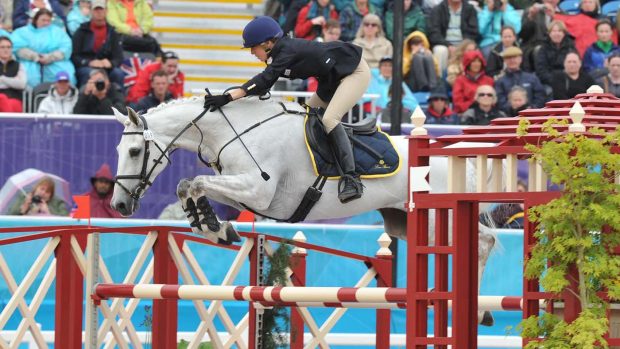Italian eventer Vittoria Panizzon finished best of the Italian squad at last year’s European Championships and at the 2012 London Olympics when she piloted Borough Pennyz into individual eigth and 11th places respectively. Unfortunately, Vittoria had to withdraw Pennyz from this year’s World Equestrian Games just before her dressage test.
Here she shares with H&H her top tips for warming up and down:
1. The Italian rider learned a lot from studies carried out prior to the 2008 Olympics into the best way to cool down horses.
“The hotter the weather the more of a concern it is to get a horse’s body temperature back to normal as soon as possible,” says Vittoria.
At a three-day event she uses a pre-cooling technique prior to going across country. She likens it to the days of the long format, which included a mandatory 10-minute break before crossing the start line.
“I begin by letting the horse loosen up and then we will do some faster work as
a pipe opener — rather like the roads and tracks and steeplechase in the old days,” explains Vittoria.
“It is important that the horse’s heart rate is up and we will jump several fences to get our eye in and make sure I am seeing a forward stride.”
This is followed by a 10-minute break. The horse walks around and his flanks and neck are washed down. Excess water is scraped away before he is towelled off — imperative for preventing slippery reins.
“The idea is that if the horse sets off cool then he will recover quicker.”
2. After crossing the finish line it is important to pull up gradually.
“I do see people forgetting to do this because they are so happy with their round but tired horses are more likely to trip and that risks injury.”
Loosen the horse’s girth before undoing it and removing the saddle completely.
“I like to do this so that the pressure is released gradually,” adds Vittoria. “Keep the horse moving as much as possible to help blood circulate around his body which will speed up the recovery process.”
3. It is crucial to get water on to a hot horse quickly. This applies to finishing a cross-country round, after schooling or working on the gallops.
“There can be a 25-degree change in the water temperature from when it goes on the horse to dropping off his stomach, so sponge it on and then scrape it off and put more on. You don’t want hot water sitting on the horse,” says Vittoria. “I like to offer a few sips of drinking water quite soon after exertion. I wouldn’t want him to be thirsty after working hard.”
4. She does not allow horses to eat until they have stopped puffing.
“Then they will have a pick of grass so that they drop their heads which helps to clear the nasal passage,” adds Vittoria whose team places ice in the water tank on hot days to keep it cool for washing down. “Prepare this before your cross-country round so that it is ready for use as soon as you get back to the lorry. However, don’t leave buckets in the sun.”
5. Vittoria’s horses wear cold boots after a big run to help warm, tired legs recover.
“We check the boots frequently because they heat up quickly and then have the opposite effect on legs.”
6. On a sunny day a cooler is applied to prevent the horse catching a chill. On a colder day a Thermatex is worn to wick away moisture while keeping the horse warm. Studs are taken out as soon as possible.
“Borough Pennyz is bouncy so her studs are removed before she treads on herself or a person.”
7. The key to cooling down a horse efficiently is organisation.
“It is important that every helper knows what their job is and all the necessary kit is easy to get to to save wasting any time,” says Vittoria.
This training feature was originally published in Eventing magazine in the May 2014 issue.




